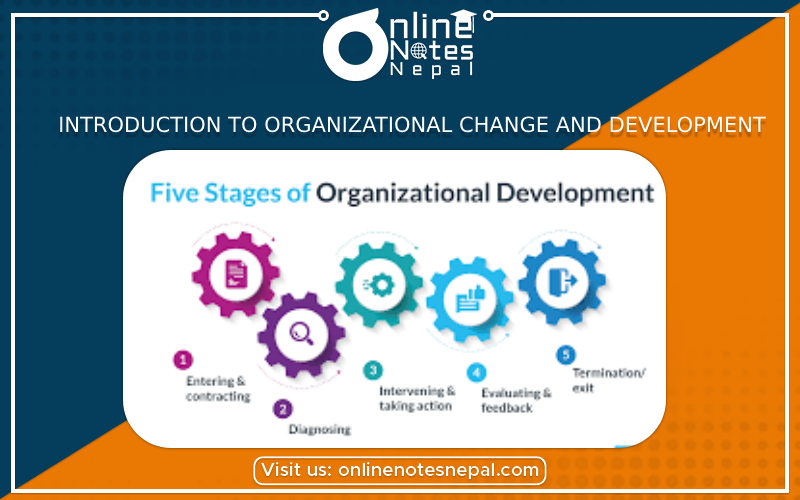Published by: Dikshya
Published date: 28 Jul 2023

Organizational Change and Development (OCD) is a crucial aspect of modern business management and leadership. In today's dynamic and fast-paced business environment, organizations need to adapt and evolve continuously to stay competitive and relevant. OCD involves planned, systematic, and purposeful efforts to bring about significant changes within an organization. These changes can range from restructuring processes, improving workflow, altering strategies, embracing new technologies, or transforming the organizational culture.
Key Concepts of Organizational Change and Development:
a. Change Management: Change management refers to the structured approach of planning and implementing change in an organization. It involves understanding the need for change, creating a vision for the desired state, identifying potential challenges, and devising strategies to overcome resistance and obstacles.
b. Organizational Development (OD): Organizational Development is a broader and ongoing process that aims to enhance an organization's overall effectiveness and efficiency. OD involves various interventions such as team-building workshops, leadership development programs, employee training, and cultural assessments to create a healthy and productive work environment.
c.Reasons for Change: Organizations may undergo change due to various factors, including shifts in market demands, technological advancements, mergers and acquisitions, internal inefficiencies, or external regulatory changes. Understanding the reasons for change is essential for successful implementation.
e. Resistance to Change: Change often faces resistance from employees and stakeholders who might be comfortable with the status quo or fear uncertainty. Managing this resistance is critical to ensuring the change's success.
f. Change Models and Frameworks: Several change models and frameworks exist, such as Lewin's Change Management Model, Kotter's 8-Step Change Model, and the ADKAR model, which provide structured approaches to guide organizations through the change process.
g. Benefits of Organizational Change and Development: Embracing OCD can lead to improved efficiency, increased employee morale, enhanced customer satisfaction, better decision-making, and overall organizational growth and competitiveness.
h. Challenges of Organizational Change and Development: Implementing change can be complex and challenging. Common obstacles include lack of leadership support, inadequate communication, employee resistance, insufficient resources, and failure to sustain changes in the long term.
i. The Role of Leadership: Effective leadership is vital during periods of organizational change. Leaders must communicate the need for change, inspire and motivate employees, and provide a clear roadmap for the transformation process.
j. Continuous Improvement: OCD is not a one-time event but an ongoing process. Organizations must continuously monitor and adapt to changes in their internal and external environments to remain agile and competitive.
In conclusion, Organizational Change and Development are fundamental components of modern organizational management. Embracing change and fostering a culture of continuous improvement are essential for businesses to thrive and succeed in today's ever-changing world. By understanding the concepts, challenges, and benefits of OCD, organizations can build resilience and adaptability, setting themselves up for long-term success.